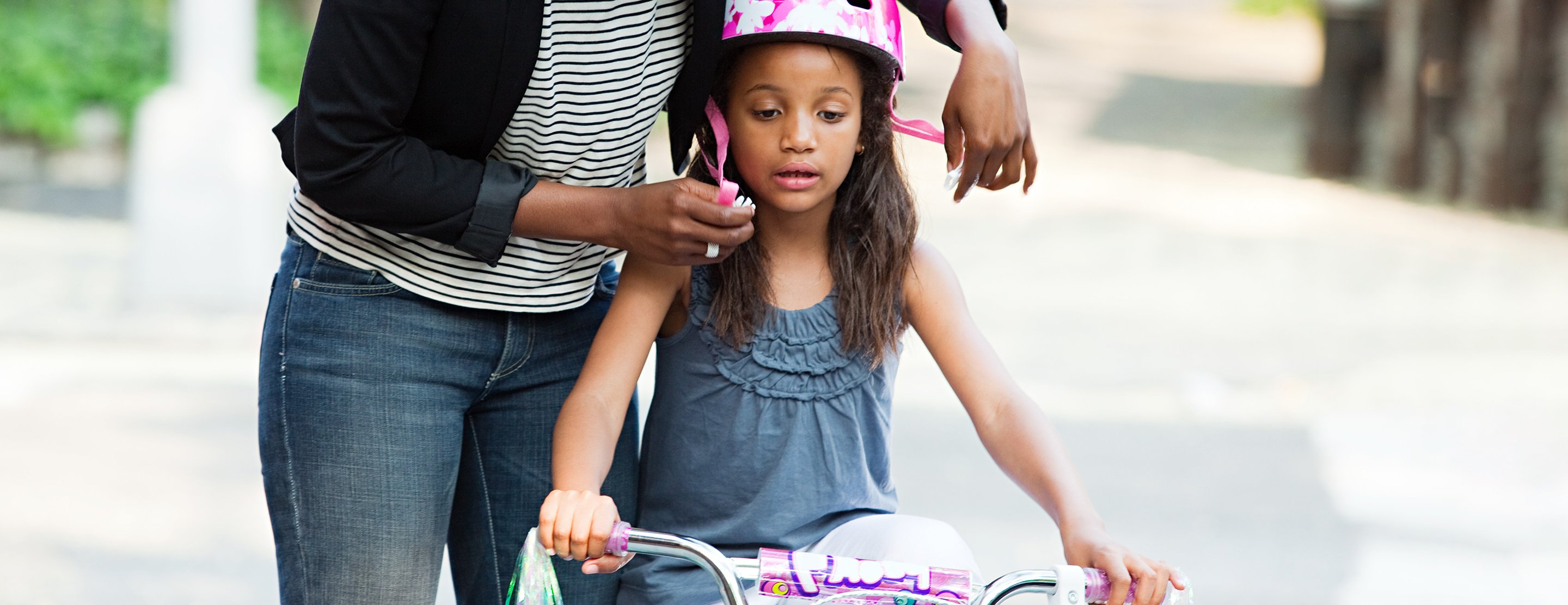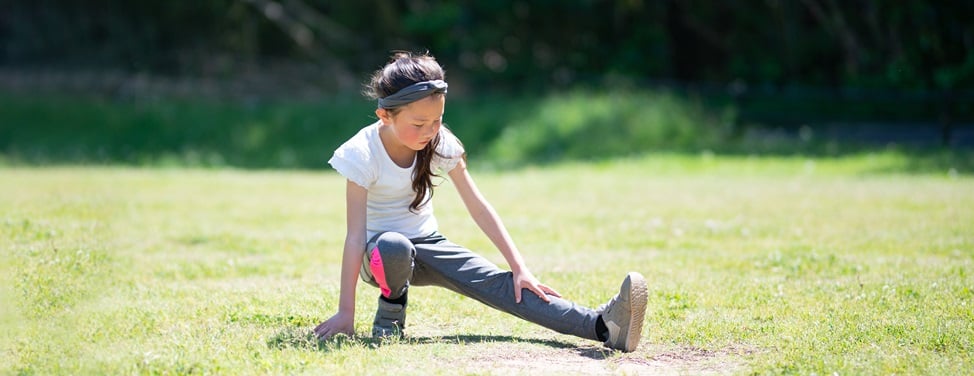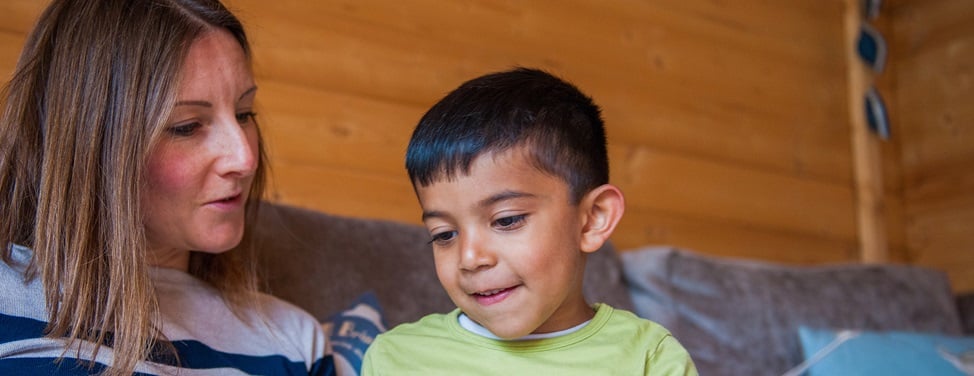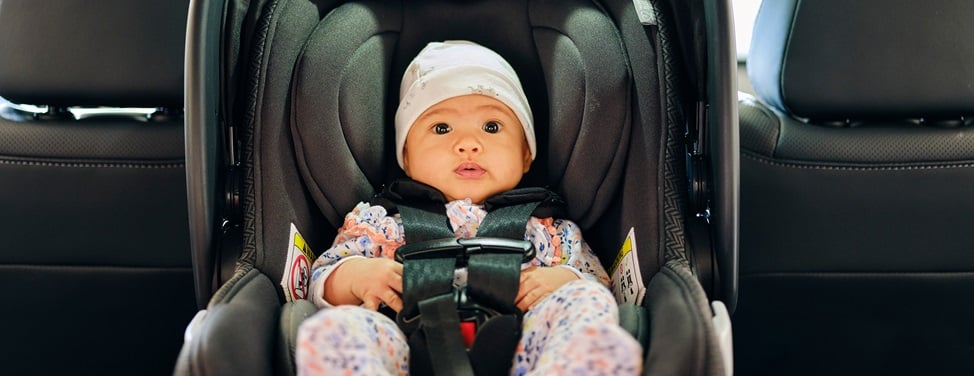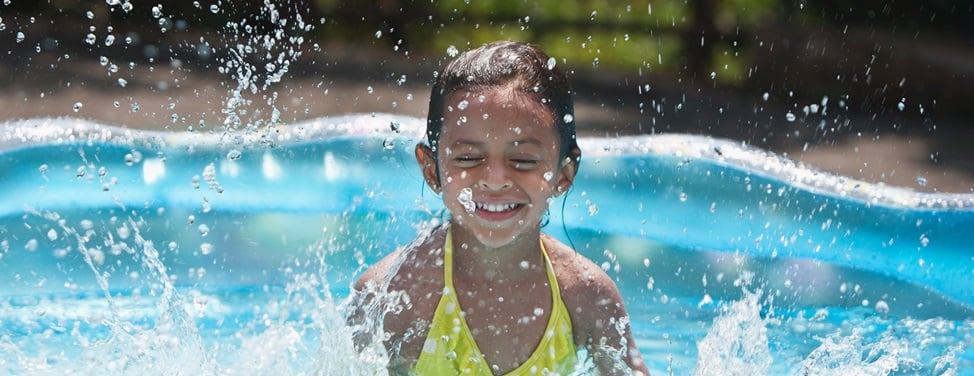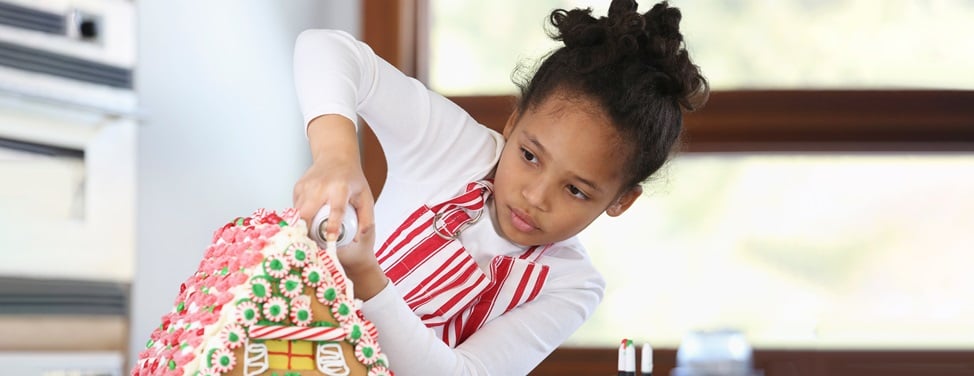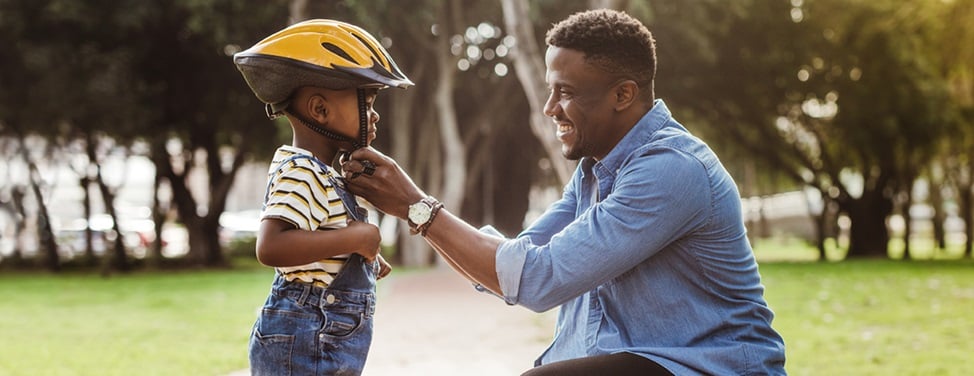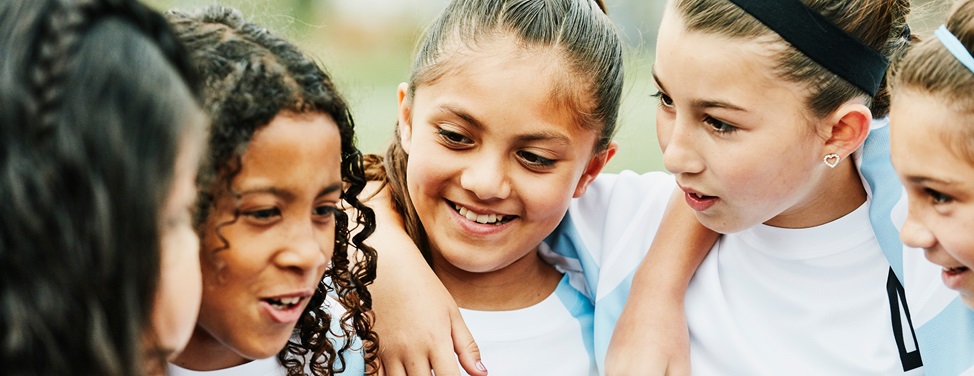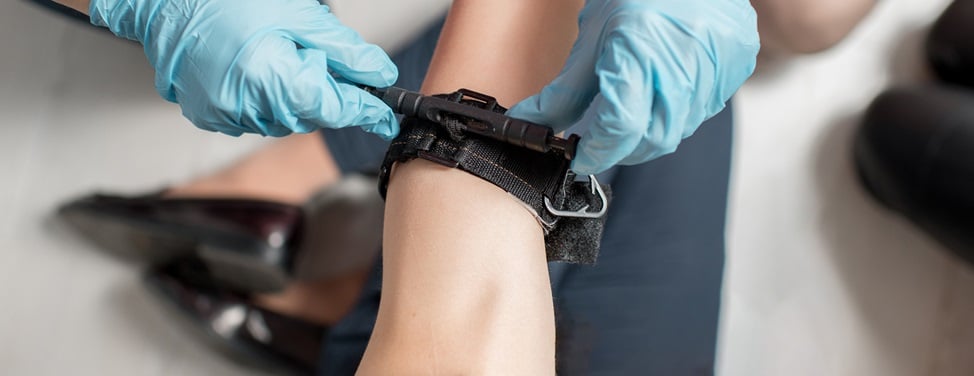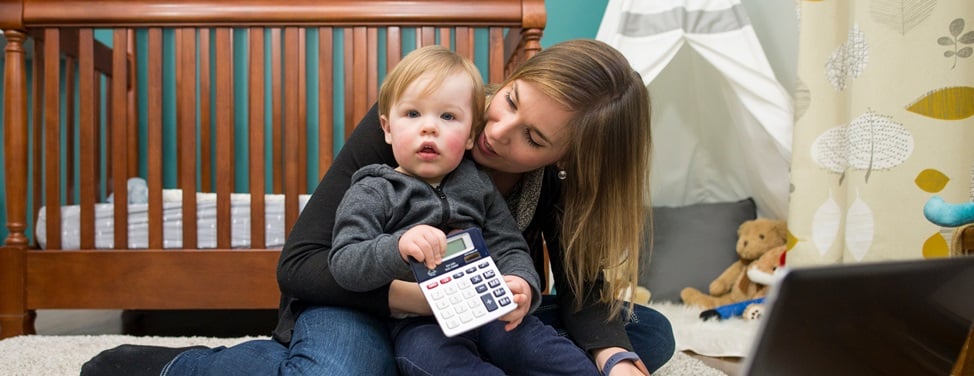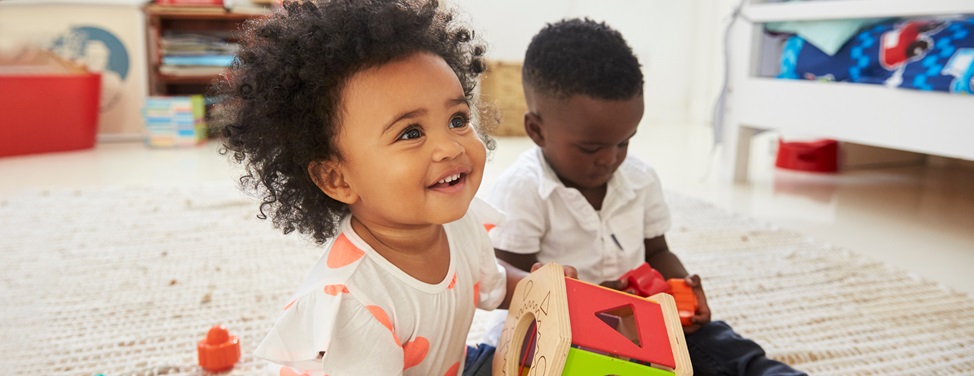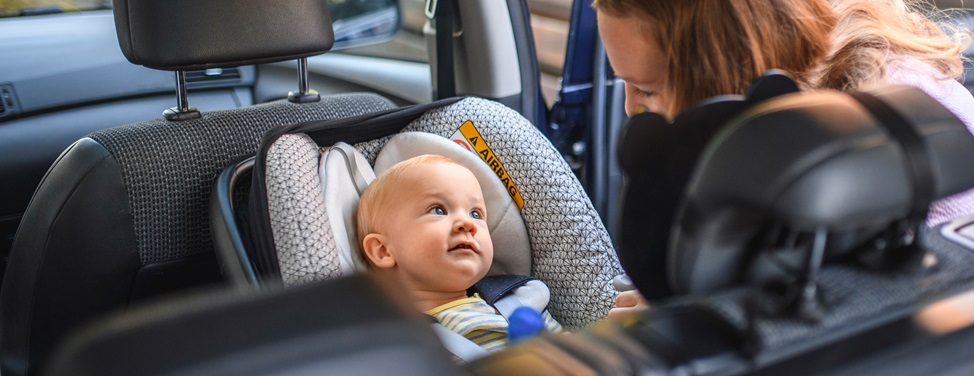Injury prevention and child safety information
This safety information is available in a booklet titled "Keeping Safe From Injury" from UCSF Benioff Children's Hospital Oakland Trauma Services.
Our goal is to increase parents' knowledge about how to prevent injuries by providing educational materials and safety devices for families in the community. We hope you'll take the time to read this important and useful information and share it with your friends and neighbors. It is estimated that 90 percent of unintentional injuries could be avoided and the information in this booklet may make a difference in your child's life.
Download: Keeping Safe from Injury
Download in Spanish: Cómo evitar accidentes
"Keeping Safe From Injury" was compiled by Bonnie Lovette, RN, MS, PNP, Injury Prevention Coordinator, Trauma Services, UCSF Benioff Children's Hospital Oakland.
Car seats
VIEW: Car Seat Installation Videos
Why should I use a car seat?
Motor vehicle crashes are the leading cause of death among children. A car seat, properly used, is the best way to prevent a child's injury or death in a crash.
California car seat law:
All children under 8 years of age must be properly restrained in the back seat of a vehicle in a correctly installed child passenger safety restraint that meets federal standards.
All children who are between 8 and 16 years of age must be properly restrained in either an appropriate child passenger restraint or a properly fitted safety (seat) belt.
All children must remain rear-facing in the back seat of the vehicle in an appropriate car seat until 2 years of age unless the child weighs 40 or more lbs. or is 40 or more inches tall. The penalty for turning a child forward facing too soon with court fees is about $500 and a point on the license against the parent, or the driver if the parent is not present.
All children 2 years or older should continue to ride rear facing until they have outgrown the rear facing weight or height limit for their car seat. (For most children that is 4 years of age). Car seats that are being manufactured now have much higher rear facing limits. Children can sit with their legs in positions that adults would find painful and be comfortable. Studies have shown that leg injuries are rare for children who are rear facing.
All children who have outgrown the rear facing weight or height limit for their car seat then should ride forward facing using the internal 5-point harness system for as long as possible to the highest forward facing weight or height allowed by the manufacturer. Children may be placed forward facing in a convertible seat or forward-facing-only seat or a combination 3-in-1/all-in-1 car seat.
All children who have outgrown the height and/or weight limit of the forward-facing harness should ride in a booster seat. Backless boosters require that the vehicle seat has a high back or an adjustable head rest (up to the child's ear level). If the vehicle seat is low and/or the head rest doesn't adjust high enough, a high back booster seat is used. If the child can be properly restrained forward facing in a combination seat (which has a high back) or in a 3-in-1/all-in-1 seat (which may have high back or backless options) the 5-point harness is removed from the seat. All boosters require the child to be restrained by both a shoulder and lap belt system.
Safety tips:
A child typically outgrows their booster seat by 4 feet 9 inches tall, which may be 10 to 12 years of age, and can then use the adult safety (seat) belt in the back seat of the vehicle.
Safety (seat) belts fit properly when the lap belt lies across the upper thighs and the shoulder belt fits across the chest in front of the child.
Car seat use reduces the risk for death to infants (0 to 1 year) by 71 percent and to toddlers (aged 1 to 4 years) by 54 percent in passenger vehicles.
Booster seat use reduces the risk for serious injury by 45 percent for children aged 4 to 8 years when compared with seat belt use alone.
For older children and adults, seat belt use reduces the risk for death and serious injury by approximately half.
All passengers age 12 or younger should be properly restrained in the back seat.
Make sure to read the manufacturer's instructions to see what positions are allowed for the carrying handle when securing an infant seat in the car.
Child passenger safety is one of the few areas where the next step is not positive & where delaying transitions is best practice. Moving a child to a booster seat too early reduces the level of protection.
When should I use a car seat?
Always. No trip is too short. Most motor vehicle crashes happen within 25 miles of home. Use a car seat every time, on every trip, in any car.
Make sure your friends, relatives, and childcare providers have a correctly installed car seat that they use every time your child is in their car.
Find a car seat inspection station in your area: (866) 732-8243
Seat belt test to determine if your child is ready to use an adult seat belt:
Does the child sit upright with hips all the way back against the vehicle's seat back?
Do the child's knees bend comfortably at the edge of the vehicle's seat?
Is the lap belt below the abdomen, on the top part of the thighs, and snug across the hips?
Is the shoulder belt centered over the shoulder and across the chest?
Can the child stay seated in this position for the whole trip?
If you answered "no" to any of these questions, your child needs a booster seat to ride safely in the car (Source: www.carseat.org).
Kids and car safety
Children should never play in or around cars!
Did you know?
In the U.S., 50 children are backed over by vehicles every week, and at least two of these children are fatally injured. In 70 percent of the incidents, the driver of the vehicle is their parent, grandparent, aunt, uncle, or older sibling. In one minute, your life can change forever. There are many simple ways that we can keep children safer around cars.
What can you do to protect your family?
- Do not allow your child to play in or around parked or moving cars no matter where they are located.
- Check online, in the automotive department of a local store or at auto parts retailers, for camera devices to help prevent backover injury. All vehicles can and should have rear view visibility.
- Walk around your car before starting it to make sure a child is not behind it.
- Teach your child to never run up to a moving car and never walk behind a car.
- To reduce deaths and serious injuries caused by backovers, the Cameron Gulbransen Kids Transportation Safety Act was passed in 2014 that requires rearview technology be standard in all new cars. However, persons driving older model cars that do not have the new technology should continue to vigilantly practice all the precautions advised.
- Never leave your child unattended in the car. Even on the coolest day, temperatures inside a car can rise to 117°F in just a few minutes.
- Store your purse on the floor in the back seat, so you never forget your child.
- Remember, it is against the law to leave a child 6 years old or younger in a car without an attendant 12 years old or older.
For more information, visit: Kids and Cars
Projectiles:
In a collision, small objects become big missiles or "projectiles," making impacts of 20 to 30 times their weight. A 40-pound object could impact the skull at a weight of 1,000 pounds. Even the smallest object could injure your child.
Tip: You are less likely to be hurt in a motor vehicle crash if you secure all loose objects in the glove compartment or trunk. Examples of common loose objects in the car are cell phone, tissue box, water bottle, coffee cup, steering wheel lock, and toys.
Hyperthermia
Protect against hyperthermia. Hyperthermia is greatly increased body temperature. Even when the temperature is 60°F outside, the temperature inside a car will rise to above 110°F in a short period. On an 80°F day, the temperature inside the car can be deadly within 10 minutes. A child's body temperature can rise up to five times faster than an adult's. Leaving the windows opened slightly does not help keep the temperature down.
Never leave your child alone in the car. Many children die every year from heat stroke (fatal hyperthermia) from being left alone in a car.
Store your purse on the floor in the back seat, so you never forget your child.
It is against the law to leave a child 6 years old or younger in a car without a child 12 years old or older to supervise them.
The Hot Cars Act of 2019: This bill will require new vehicles to be equipped to detect the presence of a child or pet and to warn the driver and bystanders. This legislation is needed to to help prevent children from dying of heatstroke when left unattended, or when they have gained access to an unoccupied car. (Bill pending at time of printing) However, persons driving older model cars that do not have the new technology should continue to vigilantly practice all the precautions advised.
For more information, go to www.kidsandcars.org
The safe pedestrian
Steps you can take to keep your child safe when walking:
- Teach your child to watch and listen to police officers, adult crossing guards, and school safety patrols.
- Tell your child that traffic signs and signals are safety helpers for their protection.
- Educate your child to:
- Stop and look for moving cars in all directions before starting to walk.
- Cross at the corner, especially if there is a traffic signal or crossing guard.
- Pay attention at all times, especially for cars that are turning the corner.
- Teach your child that crosswalks are not "magic" lines that make cars stop.
- Remember that your child cannot judge speed, distance, or direction well and is easily distracted.
- Children think that if they can see a car, then the driver can see them. Explain to your child that this is not necessarily true.
- Always hold your child's hand in a parking lot.
- Make sure a responsible adult supervises your child when they are playing.
- Children should play in a yard, a playground, or a park. They should never play on the street or in a driveway.
Helmet safety
Did you know?
- Wearing a helmet can reduce the risk of head injury in a bike crash by as much as 85 percent.
- Only 50 percent of all bikers wear helmets regularly.
- Universal use of helmets could prevent one death every day and one brain injury every four minutes.
- California law requires all youth under the age of 18 to wear helmets during all wheeled activities – which includes bikes, scooters, skateboards, and in-line skates.
Be safe: Always wear a helmet!
Helmet checklist:
- Buy a helmet that meets the safety standards of the Consumer Product Safety Commission (CPSC) and the American
- Society for Testing and Materials (ASTM).
- Place the helmet directly down over the forehead.
- Tighten the chinstrap to keep the helmet from slipping forward or backward. Only one finger should fit inside the chinstrap.
Tip: A helmet must be worn correctly with the straps buckled to prevent injuries. Learn more about helmet safety from this National Highway Traffic Safety Administration guide.
Trampolines
The risk of injury is so high that the American Academy of Pediatrics strongly discourages the use of trampolines at home. Trampoline park injuries also are an area of emerging concern.
According to a study on pediatric trampoline injuries released in 2016, based on National Electronic Injury Surveillance System (NEISS) data, trampoline injuries result in nearly 100 000 emergency department (ED) visits a year. That's more than a ten-fold increase between 2010 and 2014. The number of trampoline parks in the United States also increased during this time, from around 40 in 2011 to 280 in 2014. The study also found that the majority of trampoline-related accidents occur at home. Trampoline injuries can occur from falls on the trampoline mat, falls off a trampoline, impact with the trampoline frame or springs, and collisions of multiple trampoline users.
If you allow your child to use a trampoline, an adult must always actively supervise them; however, remember injuries can occur when a child lands wrong even if parents are watching them.
Trampoline safety
- If possible, a trampoline should be set at ground level (over a pit).
- Children under 6 years of age should not be allowed to play on a trampoline.
- Padding must cover the metal frame, hooks and all springs.
- Ladders should never be used with the trampoline because they allow access by young children.
- Only one person at a time should ever be allowed on the trampoline.
- Never allow children to perform tricks such as somersaults that may result in paralysis or death.
- Net enclosures can prevent injuries if a child falls off the trampoline.
Scooters
Scooters can be fun, but they are also dangerous.
Here are some things to keep in mind:
- The rider's weight is positioned forward, near the scooter's front wheel, increasing the risk of tumbling over headfirst.
- Stopping a scooter may require putting one foot on the ground, causing a loss of balance.
- The wheelbase is narrow, increasing instability when a wheel hits a small crack in the pavement or a rock.
If you have a motorized scooter, you must be 16 years old or older and have a valid California driver's license to use it on city streets.
Burns
Did you know?
Heating and cooking equipment are the number-one cause of home fire injuries in the United States.
What can you do to prevent burns?
- Keep hot food and drinks away from the edges of counters and tables.
- Don't set hot plates on the tablecloth; children can pull them off.
- Don't hold your child while drinking hot coffee or tea.
- Keep children away from the stove.
- Turn pan handles in.
- Cook on the rear burners when possible.
- Don't allow children to use the microwave without supervision. Some plastics, paper, and foil may catch on fire.
- Children may not realize how hot the bottom of a container is after it is microwaved.
- Steam burns to the face and hands are possible if popcorn, "HOT POCKETS®", or other food containers are opened too soon. "Cup Noodles®" may spill onto the hands, scalding the child.
- Burns to the mouth can occur due to unevenly heated food and from food that gets hot quickly, such as peanut butter.
- Eggs cooked in the shell may explode.
- Make sure your water heater is set to no higher than 120°F. Children can get scalded when they turn on the faucet. If the water is 140°F, they will have a scalding burn in less than three seconds.
Tip: Cool burns with cool water, do not use ice. Never use butter or Vaseline.
Choking
For the safety of your child, always follow these precautions
Do not feed a child younger than 4 years old any of these foods:
- Nuts (including peanuts, walnuts, cashews, and hazelnuts)
- Sunflower or pumpkin seeds
- Watermelon with seeds
- Goldfish crackers
- Grapes
- Cherries
- Gummy bears
- Raw carrots
- Raw peas
- Raw celery
- Popcorn
- Hard candy
- Cheese cubes
- Hot dogs and other sausages
Keep these objects out of your child's reach:
- Young children like to explore. Keep in mind that small objects – including food, coins, small batteries, and toys – can become lodged in a child's throat and block breathing.
- Button batteries (can become lodged in the esophagus & begin to cause significant damage within 15 minutes. There are many known complications from ingestion that can lead to major injury or death).
- Magnets or small pieces of toys containing magnets (When two or more magnets are swallowed, they can attract one another internally, resulting in serious injuries, including intestinal blockage.)
- Pencils
- Erasers
- Toys purchased from vending machines (these may contain lead)
- Crayons
- String
- Bottle caps
- Buttons
Here are some more guidelines to keep your child safe:
- Do not allow children to run and play with hard candy (especially suckers) in their mouths.
- Do not allow children to eat in the car.
- Never give a latex balloon to a child younger than 8 years. The child may bite it and then choke on the pieces.
- Clean the floor carefully. Food that has been dropped or lose parts from an older child's game, for example, are tempting – but dangerous – for a young child.
Tip: Young children like to explore. Keep in mind that small objects – including food, coins, small batteries, and toys – can become lodged in a child's throat and block breathing. Magnets can be swallowed and cause serious injuries!
Fires
Did you know?
Residential fires are most commonly caused by careless use of cigarettes.
What can you do to protect your family?
Install smoke detectors on each level of the home and outside each bedroom.
- Change the batteries in your smoke detectors every spring and fall when you change your clocks.
- Plan and practice two escape routes from every room in your home.
- Teach children: "Don't hide; go outside!" and "Never go back in the house!"
- Never smoke in the house, and don't drink too much alcohol.
Preventing dog bites
How to prevent dog bites?
- Never approach a dog you don't know.
- Don't disturb a dog that's sleeping, eating, playing with a toy, or caring for her puppies.
What to do if you see warning signs that a dog may bite?
- Do not run. Running may trigger the dog's chase instinct.
- Remain motionless. Stand still with fists up under your chin.
- Say "No!" or "Go home!" in a firm voice.
- Don't stare the dog in the eyes.
- If you are on the ground or knocked down, lie still with fists over your ears, elbows over your face, and knees drawn to your chest.
- In case of an attack, put something (perhaps a purse, a backpack, or a jacket) between you and the dog.
Tip: Warning signs that a dog may bite are Snarling and growling, Ears laid back, Showing teeth, Tail up, Stiff legs
Preventing drowning
Did you know?
Drowning is the leading cause of injury death for children 1 to 4 years of age. Three children die every day as a result of drowning.
- As many as 20% of near-drowning survivors suffer severe, permanent brain damage.
In natural bodies of water:
- Strong currents can carry even expert swimmers far from the beach or shore. If caught in a current, the swimmer must swim parallel to the shoreline until out of the current, and then swim toward the shore.
- When in a boat, make sure children wear U.S. Coast Guard-approved life jackets.
- Weather and water conditions can change from hour to hour.
- Always have your child swim with a buddy.
- Do not depend on air-filled swimming aids, such as water wings, in place of life jackets.
In pools, wading pools, and tubs:
- Most children drown in swimming pools.
- These children were last seen in the home, had been missing for less than five minutes, and were in the care of one or both parents at the time of the drowning.
- Children should not have direct access to a pool.
- If you have a private pool, use a four-sided isolation fence to separate the pool from the house and the outdoor play area.
- Four-sided isolation fencing decreases the chance of drowning in in-ground pools by 60 percent.
- The fence should be at least five feet tall. It should have a self-closing and self-latching gate. Never prop the gate open or leave toys in or around the pool.
- Use an ASTM-approved power pool cover (see CPSC model at www.cpsc.gov). Add a talking, wireless voice alarm that alerts you inside the house for another layer of protection. There are advanced sensor and alarm technologies, such as in-ground and above-ground pool immersion alarms, that are available as well.
- SB 442 signed by the Governor in Oct. 2017 increases the barrier requirement around a pool from one to two out of the current seven allowed safety barriers. All new residential pools, or pools being retrofitted, and pools associated with a home sale in California will be required to comply with this updated CA Pool Safety Act law. Pools associated with a home sale out of compliance will be listed in the home sale home inspection defect report.
- Some children drown in the bathtub. Bathtub rings are not a safety device. The suction cups often fail to hold. Do not depend on them for your child's safety.
- Children can drown in just one inch of water within a few seconds. Drowning is quick and silent!
- Empty buckets when household chores are done.
- Empty and turn over wading pools when not in use.
- More information on Drowning Prevention. (source The Drowning Prevention Foundation)
Tips:
- All parents and guardians who have a pool should learn CPR.
- Enroll your child in swimming lessons by 4 years of age, or earlier if they are developmentally ready. Swim lessons may be a benefit for some children 1 to 4 years of age.
Be on guard!
Make sure children playing in the water are always actively supervised by an adult who is not distracted by other activities such as reading, playing cards, using a cell phone, or drinking alcohol.
There are three parts to active supervision of young children:
- Attention
- Continuity
- Closeness
It is impossible to actively supervise your child 24 hours a day, but you must use active supervision any time injury risk is high. Other children can never substitute for adult supervision!
Attention means focusing on your child and nothing else. Anything that takes your attention away increases your child's injury risk. Common distractions are talking on your cell phone or texting.
Continuity means constantly watching your child. For example, do not leave your child by the pool to go inside and get a towel.
Closeness means staying close enough that you can touch your child. If you are out of arm's reach of your child, your ability to prevent injury goes down significantly.
Active supervision:
- Active supervision means watching your child in a way that allows you to prevent injuries from happening.
- Active supervision is especially important when there is high risk around a body of water.
- More information on Drowning Prevention. (source The Drowning Prevention Foundation)
Preventing falls
Did you know?
Falls are the leading cause of non-fatal injuries for all children ages 0 to 19. Every day, approximately 8,000 children are treated in U.S. emergency rooms for fall-related injuries. This adds up to almost 2.8 million children each year.
- Children fall from windows, downstairs, off furniture, from bikes, while skating, and off of outdoor play equipment.
- Each year more than 200,000 children are injured on America's playgrounds; a child is injured every two and a half minutes. Most playground injuries relate to age appropriateness and involve children younger than 5 years playing on equipment designed for children who are 5 or older
What can you do?
- A responsible adult should always supervise young children.
- Don't use a baby walker. Baby walkers tip over easily and allow children to get to dangerous places. A child in a baby walker can fall down the stairs.
- Make sure playground equipment looks safe; there should not be any broken parts or jagged edges. Playground equipment should have protective surfacing under and around it.
- Look for age-appropriate equipment and a separate play area for different age groups: ages 2 to 5 and 5 to 12. Children's size and physical ability vary with age. Most children ages 2 to 5 are smaller, weaker, and less coordinated than 5- to 12-year-olds. They also have a higher center of gravity. Young children need smaller steps and crawl spaces. Their hands require smaller grips, and their bodies require appropriately spaced railings on platforms.
Prevent window falls
- Install window guards or window stops in bedrooms and other rooms above ground level where children play.
- Children can fit through windows open as little as 5 inches, so don't open more than 4 inches.
- Screens will not protect your child from falling.
- When possible, open windows from the top, not the bottom.
- Keep furniture that children can jump and bounce on away from windows.
- Actively supervise children
Gun safety
What can you do to protect your children?
If a gun must be in your home, store it unloaded, in a locked place, and keep the bullets in a separate locked place.
Before allowing your child to play at someone else's home, make sure there is a responsible adult present, and don't be afraid to ask, "Do you have a gun in your house?"
In the U.S., one out of three homes with children has a gun, and nearly 1.7 million children live in a home with a loaded, unlocked gun.
Gun violence prevention
Gun violence is a critical and preventable public health problem:- More than one in five U.S. teenagers (ages 14 to 17) report having witnessed a shooting.
- An average of seven children and teens are killed by guns every day.
- Firearm homicide is the second-leading cause of death (after motor vehicle crashes) for young people ages 1 to 19 in the U.S.
- The lifetime medical costs for all gun violence victims in the United States are estimated at $2.3 billion, with almost half the costs paid by taxpayers. (Source: Brady campaign)
Become active in your community to find solutions to end gun violence!
Every two hours in the United States, someone's child is killed with a loaded gun. Don't let it be your child!
Did you know?
- The risk of suicide is five times greater if there is a gun in the home.
- A gun in the home triples the risk of homicide.
- Each year approximately 7,500 children are admitted to U.S. hospitals with gunshot wounds and more than 500 children die during hospital admission from these injuries.
Sudden unexpected infant death (SUID)
*Infant sleep deaths are also referred to as "SIDS and other sleep-related infant deaths."
Sudden Unexpected Infant Death (SUID) is the umbrella term now used for all sleep-related infant deaths. SUID includes explained and unexplained causes. One type of SUID is Sudden Infant Death Syndrome (SIDS). SIDS is the sudden and unexplained death of an infant under 1 year of age when no other cause of death can be found.*
Many SUIDs of infants under 1 year of age are determined or explained as suffocation, asphyxiation or strangulation. Suffocation or asphyxiation happens when an infant's airway is blocked by soft bedding or pillows, or when a parent rolls onto their infant, called "overlay," or when the infant is trapped between a mattress and a wall, called "entrapment." One example of strangulation is when an infant's head is stuck in-between the slats of an unsafe crib. These causes of death are from an unsafe sleep environment and can all be prevented. *Infant sleep deaths are also referred to as "SIDS and other sleep-related infant deaths."
For more information, go to Safe to Sleep Information at the National Institute of Child Health and Human Development.
TIPS:
- Breastfeeding & a safe sleep environment give your baby a great start! Breastfeeding is associated with a reduced risk of SIDS.
- Get your baby fully immunized with all the recommended shots! Recent evidence suggests that immunizations may have a protective effect against SIDS.
When putting your baby to sleep:
- Always Place your baby on their back for sleeping at night time and nap time Sleeping on the back has been proven not to increase the risk of choking and may decrease the risk. This is because of the location of the tube to the lungs in relation to the tube to the stomach.
- Your baby should never bed-share with another child or adult. This puts your infant at risk for "overlay" when an adult or child rolls onto the baby.
- Take crib "bumpers" out of the crib.
- Place your baby to sleep on a firm sleep surface. Never place your baby to sleep on pillows, quilts, couches, waterbeds, memory foam or pillow top mattress, beanbags, air mattresses, sagging mattresses, Or other soft surfaces.
- It is best for your baby to sleep in your room on a separate sleep surface designed for infants (ideally a crib or bassinet that meets the safety standards of the Consumer Product Safety Commission) until 1 year of age or at the very least until your baby is 6 months old. Room sharing without bed sharing decreases the risk of SUID by as much as 50%.
- Keep soft objects, toys, crib bumpers, and loose bedding out of your baby's sleep area. These can pose a risk of suffocation or strangulation.
- Your baby should sleep in light clothes or a wearable blanket on a mattress covered with one tight-fitting crib sheet. This reduces the chance of the baby's head being covered.
- If you chose to swaddle always place your baby on their back. Swaddling should be snug around the chest but allow for more room at the hips and knees. At 2 months, when your baby shows signs of starting to roll swaddling should no longer be used. There is a high risk of death if a swaddled infant is placed on or rolls onto their stomach. Swaddling has not been shown to reduce the risk of SIDS. It is recommended by some experts that swaddling is done only when feeding or trying to calm your baby.
- Don't let your baby get too hot. Over-bundling in clothes should be avoided. A top sheet or a blanket may cover your baby's face, head or neck and overheat them as well as being a suffocation risk.
- Don't use your baby's car seat, or stroller, swing or infant sling as a place to sleep at home. Place your baby back into their safe sleep environment.
- Do not feed your baby in an armchair or on a sofa. These areas put your baby at risk for suffocation or entrapment (wedging between seat cushions) if you fall asleep.
- If you feed your baby in your bed, clear the bed of pillows, blankets, sheets, comforters and soft objects that could obstruct your baby's breathing. If you fall asleep during the feeding, return your baby to their separate sleep surface as soon as you wake up!
- There is a particularly high risk of SUID for babies younger than 4 months who bed share. This risk exists whether they were a term normal weight infant or an infant with a history of prematurity or low birth weight. It is best for your baby to sleep in your room on a separate sleep surface designed for infants (ideally a crib or bassinet that meets the safety standards of the Consumer Product Safety Commission) until 1 year of age or at the very least until your baby is 6 months old. Room sharing without bed sharing decreases the risk of SUID by as much as 50%.
- Offer your baby a pacifier when you place them on their back to sleep. Studies have shown there is less risk for SIDS if a pacifier is used even if it falls out of the infant's mouth. (if you are breastfeeding wait until breastfeeding is well established, so there is no nipple confusion.) Do not dip the pacifier in anything sweet. If your baby spits the pacifier out, do not place it back in his mouth.
- Offer your baby a pacifier when you place them on their back to sleep. there is less risk for SIDS if a pacifier is used (if you are breastfeeding wait until breastfeeding is well established so there is no nipple confusion). Do not dip the pacifier in anything sweet. If your baby spits the pacifier out, do not place it back in his mouth. A pacifier should not be hung around your baby's neck because of the risk of strangulation. A pacifier that attaches to your baby's clothing should not be used when your baby is sleeping.
- Do not drink alcohol during your pregnancy. There is no amount of alcohol that is considered safe. It may cause miscarriage or cause your baby to have lifelong physical or developmental problems.
- Do not smoke during your pregnancy or after your baby is born, and do not allow anyone to smoke around your baby not even if they smoke outside. Remember tobacco residue on clothes can be very harmful.
- E-cigarettes are to be treated the same as cigarettes. Do not smoke or allow anyone to smoke an e-cigarette around your baby. The Surgeon General reports that e-cigarettes contain dangerous ingredients like heavy metals, ultrafine particles, and chemicals linked to deadly lung diseases.
- Marijuana use: THC (Tetrahydrocannabinol) is the chemical in marijuana that makes a person feel "high." THC exposes a baby to smoke just as cigarettes do. The long-term effects of marijuana on a baby are not known, but it is known that it is harmful.
- Whether marijuana is smoked or used in edible or vaporized form, it passes THC to the baby through breast milk.
- Avoid products that claim to prevent SIDS including Home monitors. Most have not been tested for safety, and none have been shown to reduce the risk of SIDS.
- Make sure your childcare provider places your baby on their back. Babies who are used to sleeping on their backs are at high risk for SIDS if placed on their stomach.
- Your baby may be brought into bed for feeding and returned to their crib or bassinet when you are ready to sleep; however, bed-sharing is not recommended.
Tummy time
Daily "tummy time" when your baby is awake and being supervised will help prevent flat spots on the back of the head, promote motor development and help your baby develop upper body muscles.
For more information, go to Safe to Sleep Information at the National Institute of Child Health and Human Development website.
Poisoning
How to help prevent poisoning:
Medicines
- Use child-resistant caps only.
- Keep medicines in a locked cabinet.
- Return medicines to the cabinet immediately after use.
- Measure every dose only with the measuring device that comes with the product.
- Keep a journal of the time a dose is given and the amount.
- Know all products that contain acetaminophen, so there is no risk of accidental overdose when using more than one medicine (for example, when using both a cough and fever medicine).
- Never tell a child that medicine is candy.
- Never take medicine in front of a child.
- Keep all purses out of a child's reach.
Household Products
- Use products with child-resistant caps.
- Keep household products in locked cabinets.
- Return household products to the cabinet immediately after use.
- Store household products and food in separate areas.
- Never put household products into food or beverage containers.
- Keep liquid concentrated detergent pods (packets) out of reach of children. They may bite into them and choke, have trouble breathing & get burnt in their throat. They can also get serious burns to their skin and eyes from the detergent on their hands.
- Keep e-cigarettes away from small children. The small amount of liquid caffeine may be fatal if swallowed & poisonous if splashed on the skin.
Plants
- Know the names of all your plants and which ones, if any, are poisonous.
- Keep all plants out of the reach of small children.
- Teach children not to put any part of the plant in their mouths.
Marijuana
- If there is marijuana in a household, keep it locked up and out of reach of children & pets.
- The active chemical in the marijuana plant is tetrahydrocannabinol or THC for short. The long-term effect on children of inhaling or ingesting it is not yet known, but it is known that it is harmful.
- Most children get sick from swallowing marijuana in cookies, brownies, soft drinks, or candy that belong to their parents, grandparents, babysitters, or friends of the family. Edible products have high amounts of marijuana and children may have severe symptoms requiring hospitalization.
- There is an increase in reported marijuana poisoning in children in States that have legalized marijuana.
Lead
- Lead paint is still present in millions of homes, sometimes under layers of newer paint.
- Check window sills, walls, and blinds for peeling or chipped paint. If paint contains lead, breathing in dust from paint chips or eating paint can put dangerous amounts of lead into a child's body.
- Lead pipes and lead solder were commonly used until 1986. Lead pipes and lead solder were commonly used until 1986. Lead enters drinking water when pipes corrode. Significant amounts can enter water from faucets or fixtures with lead solder, especially into hot water.
- Lead is also found in some painted toys and from other sources such as soil. Some folk remedies that contain lead, such as "greta" and "azarcon" are used to treat an upset stomach. Some folk remedies for morning sickness, including "nzu", "poto" and "calabash chalk," contain dangerous levels of lead and other chemicals.
- Let your health care provider know if you feel your child may have been exposed to lead from any source.
If you suspect poisoning, call National Poison Control: (800) 222-1222.
Tip: Do not give syrup of ipecac or activated charcoal at home.
Concussion
Keeping Safe means always wearing a helmet for contact sports and for bike riding, horseback riding, skiing, skateboarding, hoverboards, skating and scooters!
Helmets help prevent a concussion when worn correctly.
What is a concussion?
A concussion is a type of traumatic brain injury (TBI) caused by a hit to the head or body that causes the brain to move rapidly back and forth in the skull stretching and damaging brain cells and creating chemical changes in the brain.
Symptoms of a concussion:
- Loses consciousness (even briefly).
- Can't recall events after a hit or fall.
- Appears dazed or stunned.
- Seems confused.
- Moves clumsily.
- Answers questions slowly.
- Shows mood, behavior, or personality changes.
- Complains of Headache or "pressure" in the head.
- Experiences nausea or vomiting.
- Balance problems or says they have dizziness or double or blurry vision.
- Bothered by light or noise.
- Feels sluggish, hazy, foggy, or groggy.
- Has difficulty concentrating.
- Just not "feeling right,"
There are cumulative effects on the brain from repeated concussions!
Concussion rules: No return to play until cleared by a qualified healthcare provider. Recovery may be 1-2 weeks to months. Go to Heads Up for more information about concussions




























